Latest Posts › Photography Forums › General Photo Chit Chat › Introduce Yourself Here!! › Have you met… Erik Fransman
- This topic has 22 replies, 18 voices, and was last updated 8y ago by
 Angela Fransen.
Angela Fransen.
-
AuthorPosts
-
-
March 4, 2016 at 8:10 pm #222633
Lightstalking Introductions
This time around we learn a little about Erik Fransman – @erik-fransman and his fascinating photographic journey.Tell us a little about yourself and your photography journey.
I am a filmmaker, not a photographer so my photographic journey is more related to moving pictures than to still photography. Please bear with me, if I also talk about film.
Since this site is about visuals, and a picture tells a thousand words (yeah, yeah…), I illustrate my journey with images.I am a producer / director. I make a variety of films; Industrial, documentaries, commercials, educational and fiction.
Currently, I often work as a fixer/production manager for foreign film production companies that come to shoot in the Netherlands. A fixer is exactly as the words says: he fixes everything. Makes sure, everything is arranged, fixed! From crew, to locations, permits, equipment and so on. Anything you need for a shoot.
I am married to a photographer. She mainly does portrait work. Our styles are completely different. She is much better than I am, after all, she is the still professional. But I am getting ahead of myself.
My photographic journey started when I was 7 when I got my first plastic camera for my birthday. I loved it. Still I only shot maybe one or two rolls with it. Film was expensive.
My very first pictures 1962: (Great negative space, daring vignette ☺ )

My Mother and Sister
Brother, Sister, nephew and niece.Judging these early pictures, one thing is for sure, I am not naturally gifted. Not the Mozart of Photography.
A few years later, I think I was 10, I discovered the Rolleicord of my father. A fantastic tool but quite difficult to use. You had to look into the viewfinder from above, everything was mirrored in the viewfinder and you needed a light meter. No interchangeable lenses or zoom and only 12 shots on a roll of film (120 roll-film) so you had to be sure you wanted that shot. Not many frames to waste.
I still have that camera and it still works!Photography was a bit magical in those days. You first needed to finish the roll of film, (sometimes it stayed for months in the camera before you took the last shot, than get it developed and printed. So there could be quite some time between some of the shots and the first moment that you get to see what you did. When you finally could pick up your prints from the store, that was exciting.
Here are a few of my early Rolleicord shots.

My sister and Niece (1965)
Three girls preparing for a ballet show in primary school (1965)My father also had a “Double 8” Nikon Film camera. (Nikkorex-Zoom8) Double 8 is a small roll of 16mm film on a spool. You put that spool in the camera and shoot. The film is exposed only along half of its width (half of 16mm = 8mm) till the end of the roll, then flip the roll in the camera and shoot the other half. You send it to the lab, they develop it and splice the 16mm in the middle so you get a roll of 8mm back. A roll of film lasted between three and three and a half minutes. (depending on the shooting speed, 16 or 18 frames per second.) A roll of 8mm film was expensive so you had to be economical with your material. Shooting totally uninteresting things for minutes or even longer, what we are used to nowadays with cheap digital, was unthinkable.
One summer my father came back from a holiday in Greece and he accidentally had flipped the 16mm spool over twice so the whole film was double exposed. His Holiday film was totally ruined!
His double exposure triggered me to make my first film. It was 1970 in Amsterdam, lots of flower power and soft drugs. We had quite long hair those days (photo below). I was only 14. My film was about a hippie (guy with long hair) eating a sugar lump, suggesting that was LSD. Zoomed in on his face, blurred and made a kind of a dissolve (a real dissolve was not possible in 8mm, that could only be done optically in the lab and could not be done in 8mm). After the dissolve I cut the entire ruined film of my father, because to me that looked like a LSD trip.For my next 8mm film, we had moved on to Super 8. It was a twenty minutes “epic story” between good and bad. Very violent (well not compared to today’s standards, long before Tarantino.)
One scene in this film involved the Devil attacking a pregnant woman (Don’t worry, good wins in the end…) For maximum impact I intercut that scene with flashes of baby pictures made by a famous Dutch Photographer, Cas Oorthuys. He was a friend of the family and I was allowed to use these pictures from his archive. That was the first time I used the combination stills and live action.
The Star my first movies (and best friend) on the left and me (director, DP (Director of Photography), editor) on the right.

This is 1972.Back to photography.
When I was 15 I bought my first SLR, A Canon FTql.
A father of a school friend of mine was a pulmonologist (lung specialist). They had a darkroom in their cellar to develop the Rontgen pictures of the lungs of their patients. We could use that darkroom to develop and print.
I was not very good at printing, a bit sloppy, but I did it a lot. The mess with all the chemicals, we never had the temperature right, we did not always have the right equipment to print, so sometimes I used rulers to hold down the printing paper, we had an old dryer for our prints, which was actually a bit too old for proper results. In short, a perfect recipe for disaster.
This is an example of not a very good print. If I remember correctly, I made it with the self-timer.

The four guys in the photo (that’s me on the left) were the editors of our school newspaper. We were totally independent and financed the school newspaper ourselves by selling ads to local businesses. Published it ourselves so we were not censored by the school.
Needless to say, our school newspaper was extremely popular. But most of the faculty supported us as well.This picture we made as a centerfold of our last issue, as a farewell before we went off to our final exams. The amount of effort that went into the production (location, styling, casting of the girl) is in stark contrast with the quality of the print.
Later I wanted to make a better print, but that turned out to be impossible, because the boyfriend of the girl in the photo, did not like the fact that she had posed for us. He has access to the same darkroom, stole the negatives and destroyed them. Oh well…
Can you imagine publishing this photo in your school newspaper?
Those were the days! Amsterdam 1971.A few years later I dismantled my “electric train” which I had for years in the basement out my parents’ house, sold it and bought my own enlarger and made my own darkroom. That was convenient because I did not have to leave home for developing and printing, and it did improve my printing skills a little bit.
Here is an example of my photography and printing of those days.
The very first “Sail Amsterdam” (1975).


That same year I was an intern at the largest TV production company of Holland (now bankrupt).
There I learned a lot about the both the technical and creative sides of the business.
I spend a few months in the lab learning about sensitometry, film development, optical effects and color correction. Color correction was done with a state of the art machine called the Hazeltine. The Hazeltine reverses images of the original negatives and displays them on a calibrated monitor. There were turn dials of the three primary colors (red, green, blue) to correct the image.
After the Hazeltine correction, the film was printed. Then the colors of the printed film were inspected manually and corrected a second time, now by using glass colored filters (cyan, yellow, magenta).
For leaning purposes I corrected many test films. I was not very good at it. Usually my corrections were way to red and overly saturated. (Hey, I still do that….)
A Typical conversation after a print I did came back from the lab. Colorist: “You like the result”.
Erik: “Yeah, I am pretty happy with it”. Colorist: “Not a bit too red?” Then he picks up a heavy cyan filter and holds it over the print.
Erik: Eh yeah… that looks better…..My next camera was the Canon EF which I really liked, not only because it was it had my initials.
With the Canon EF I made my first photo that I sold to a Dutch Music Magazine, “The Hitkrant”.

Blondie, 1978I made this photo at a concert of Blondie. At that time I had an internship at the Dutch Cinema News. (Cinema News still existed in 1978.) I was a self-directing cameraman and made a two minutes item about punk and Blondie. The Cinema News was shot in 35mm with an Arri 2c (which is a very loud camera). For this item we needed sound so we used a blimped camera. (Blimped means quiet). We decided to shoot with a 16mm Arri BL and blow it up for the cinema release. (A 35 mm blimped camera was enormous. Could not shoot documentary style with that)
Another reason to choose for 16mm was because on 35mm we were only allowed to shoot two 60 meter rolls of film (total of 4 minutes) for an entire item. In 16 mm we could shoot, for the same costs, 4x as much.

Erik shooting with a 16mm Arri BL.After graduating from the Dutch film school I went to CalArts in California for my masters.
At CalArts I met the now famous director James Mangold (Copland, Walk the Line, Wolverine).
With him I made my first industrial film (1982). It was a film for General Motors for the opening of the Epcot center in Florida. James was directing, I was cameraman/DP. We had very limited equipment. Just a simple 16mm camera and a few lamps (four 600W Red heads) . Still, it was the first film, where I (as a DP) used lights to create an atmosphere. All the films before I used either available light or used one bright halogen lamp to bounce off the ceiling just to make it brighter.
That’s the difference between lights and lit.

On location with James Mangold, 1982.From here on forward, all of my film work have been lit but my photography was mostly available light.
Why this difference? In film I always work with a crew varying from 3 to 45 people. Photography is a hobby and I am alone. Working alone, I don’t want to mess with lights, stands, scrims, filters, cables and so on.
Another difference between professional film and hobby photography: In film, we always scout for the best locations to shoot and often pay those locations to use them. We use a specialized location scout to find the perfect location for us. In amateur photography, I do not have these resources so I stick to what I can find.Every now and then I also do a professional Photoshoot (as a fixer). With a professional photoshoot, like a film shoot, you have a fairly large crew and everything is planned and organized. Sometimes with lots of lights. A few years ago, I did a photoshoot in Amsterdam for Sony Japan.
Sony had just signed the Chinese pianist Lang Lang for their Sony Classics label and needed pictures for their press releases and new album covers. At that time Lang Lang was giving a few concerts in Amsterdam so the shoot had to be done in Amsterdam. The Japanese came over with a crew of 8 people, we locally had an additional 15 crew.
When I received the light equipment list, I was not sure whether something was lost in translation (always a challenge with Japanese shoots). They ordered 25! Broncolor 3200W lamps. When I went to the rental company they asked me: ”What are you going to lit? The Olympic Stadium?”
I had to answer: “Eh no, a piano!”
The film Apollo 13 has a famous line: “That’s a quadruple failure. That’s impossible”.
This was quadruple backups because the Japanese producer wanted to be covered shooting with a star like Lang Lang. Well, he wanted to be covered on the technical side.
Because it was a photoshoot, the producer did not want to spend any money on tuning the piano. His reasoning: On a photo you do not hear the piano. I did not agree. I went over his head and ordered the Concert Steinway to be tuned anyway.When Lang Lang entered the studio, he sat down at the Steinway, played the first notes and looked up. “What a fantastic tuned piano, thank you”. The producer was standing next to him, smiling ear to ear.
(Later he came up to me and could not stop thanking me. “You are today’s hero, you are today’s hero”)
Well, that’s what a fixer does. Making sure everything is A OKE.

This is a set photo with Lang Lang.Back to 1994. In 1994 I meet my second wife. She is a portrait photographer and very good at it.
She is my photographic anchor. She is a great photo editor and quickly decides what is worth spending time on, and what is not. I value her advice in selecting photo’s, and usually, I follow it.At that time, I picked up my interest for still photography again. I bought a Canon EOS A2E, but I was not happy with the kit lens and with the bulk of the camera. After a few years I traded it in for a Contax G2. A beautiful small rage finder. I never liked flash photography, with the Contax and the fast lenses I won two stops! TWO STOPS! So I could make interior photo’s without a flash.
One of the projects that I started was “Men waiting for their wives shopping”. I could do “stealth” interior shooting. I used Tri-X (400 ISO) , pushed it one stop and had an 2.0 aperture on my Carl Zeiss Planar T 45mm and a f2.8 on my 90mm. The equipment made it possible to make pictures that I otherwise could not make. A small unobtrusive camera, with a great fast lens.
Men waiting for their wives shopping. (Still not god’s gift to printing…)



This Photo, the shadow of the Eifel tower, was also made with the Contax. It was sold to Art Unlimited and they published it as a postcard.

View from 367 steps up (1998)I always wanted to do panorama’s so after a few years I sold my Contax and bought a Fujifilm TX-1 (Not to be confused with the Fujifilm X-T1). The Fujifilm TX-1 is an 35mm panorama camera. This Fujifilm was like the Hasselblad X-Pan. As a matter of fact, if I remember correctly, the Hasselblad X-Pan was made by Fuji. This camera exposed two normal 35mm negatives at once, making it a panorama. An absolute fantastic camera. The only disadvantage was that you could only have it printed manually by a professional lab. So each print was about $25. That became quickly a bit too expensive.

My daughter and friend. Fujifilm TX-1.Digital times had arrived and the digital cameras became “good enough”. I traded my Fujifilm TX-1 in for a Canon G5. I had the Canon G5, G7 and G9. The cameras got better and better. My pictures stayed the same. Besides holiday snapshots I did not do any photography for about 10 years. Our (my wife and I) big passion was riding motorcycles in the mountains and we had very limited space for luggage. A camera kit was not on top of my luggage priority list.
In 2012 that changed a little bit. I picked up my interest in photography and I wanted a bigger sensor than the G9. On sale I bought a Samsung NX200. Very nice camera, good lens, but slow focus and huge files. (In 2012 huge files did matter because they required a lot of computer power. I still liked to do panorama’s, but stitching a 5 image panorama took too much of my I7 Vaio. I had to do them in JPG, raw files were just too big.

Pano made with the Samsung NX200,Bye Samsung, hello Fujifilm X-E1 and now recently the Fujifilm X-T1.
I love the Fujifilm camera’s. Much smaller than a DSLR, fantastic High ISO performance, good lenses and not involved in the megapixel race. “Only 16MP”
Most of you have seen some of my X-E1 and X-T1 pictures on LS. If not, and you are interested, see my Flickr. (Link below).About two years ago stared using Post Production software like Photoshop (rarely) and Lightroom.
I …….
What was the question again……? ☺
Tell us a little about yourself and your photography journey.
I think I covered that…..– Next question:
What is the best advice you received so far regarding photography?
If you don’t see it through the lens, do not push the shutter.Is there a theme or a special fascination for certain subjects?
Not that I am aware of.Where do you live ?
I live in Amsterdam, the Netherlands with my wife and four cats. I have two beautiful daughters. Both very creative and sometimes we can work together. Currently I am working with my youngest on a proposal for the Amsterdam Light Festival 2016 – 2017.Hobbies and interests?
I really like sailing although do not do that much lately, driving my convertible in the mountains (Like I said before, I used to ride motorcycles but I stopped after a severe accident. My wife still rides motorcycles so now we go together to the mountains, she on her BWM1200 GS motorcycle and I in my VW EOS (convertible). People find that a strange combination but it works for us.
I also really like bridge, but I rarely do that anymore.How do you maintain inspiration?
I don’t even know what inspiration is.
I do look for situations that are beautiful, tell a story and make me laugh, cry or say “WOW”.
And I look to show things a little different.
When people say to me you cannot do that, I usually try to do just that.
I do like post processing and creating the final look.Favorite subject?
I have no favorite subject. Sure, cats are always good. Okay, my favorite subject are CATS.Are you currently involved with any photography projects? If so, what?
Yes and no. I want to do a series of portraits, but for one or another reason I do not start this project.
So yes I have a project and no I don’t do it.I have another project planned called “Interiors”. In Holland many people do not have curtains or blinds. In the evening when it is dark outside you can look inside the homes from the street.
My “Interiors” project is looking to these interiors from the outside. Most likely all the shots will be evening shots when the rooms are lit. (If I ever will do the project)If you could only use one camera/lens combination for a year, which would you choose?
I would like to have a small light pocketable camera, with a fantastic viewfinder, full frame and a 10 – 500 mm f 1.0 zoom. And I am not giving it back after a year.
(It would be great if that camera also makes a perfect espresso)What is your favorite image right now?
Impossible to answer.What is your biggest challenge when it comes to photography?
My biggest challenge is to go out and come back with at least one picture that I am happy with. Each time.If people want to follow more of your work where should they go?
Photography: Flickr: https://www.flickr.com/photos/thefrenchman/
Film: Website: http://netherlandsproductionservices.nl/
Click on “Portfolio” to see some clips.If you read it all the way thru here, thank you for your patience.
Erik.CC: @erik-fransman,
-
March 4, 2016 at 11:35 pm #222641
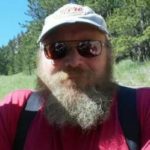 Robert AppleModerator
Robert AppleModerator- https://www.instagram.com/robert.apple.98/
- https://photography667a.myportfolio.com/
- Allows Edits: Yes
@robertapple- Posts:8879
Allows Edits? YesIt is interesting to know more about you and what influences your photos, thanks for sharing.
-
March 5, 2016 at 8:04 am #222653
I could tell from the very helpful critiques you’ve offered me Erik that you had experience and an innate attention for detail. I really enjoy this series that David has put together. Getting to know something about those we are interacting with on LS very much adds to the richness of the experience. Thanks for taking the time to share this with us Erik. I enjoyed your voyage and your humour. Cheers!
-
March 5, 2016 at 11:13 am #222665
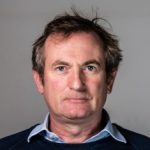 chris pookParticipant
chris pookParticipant- https://www.instagram.com/christopher.pook/
- https://www.flickr.com/photos/pookies_pics/
- Allows Edits: Yes
@chrispook- Posts:3263
Allows Edits? YesWhat a great story Erik, thank you for sharing. Particularly enjoyed the early photographs.
-
March 6, 2016 at 6:06 am #222715
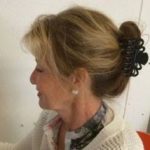 ElinLParticipant
ElinLParticipant- elinlaxdal1
- https://www.flickr.com/photos/40843248@N07/
- Allows Edits: Yes
@elax- Posts:4777
Allows Edits? YesThank you for sharing your fantastic story with us Erik, an entertaining read. And also thanks for your useful comments and views. A lot of great shots on your Flickr page !
-
March 6, 2016 at 5:58 pm #222750
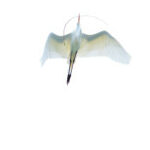 Chrissie BeeParticipant
Chrissie BeeParticipant- Allows Edits: Yes
@chrissiebee- Posts:1264
No Achievements Yet!
Allows Edits? YesLoved the history you provided us with, Erik. From the start you have been someone whose critiques and comments I respected. They’ve been very thoughtful and insightful. Look forward to getting more of your expert advise!
-
March 6, 2016 at 6:21 pm #222756
A wonderful story Erik! If Canon comes up with a camera with an espresso attachment…!!!
-
March 7, 2016 at 1:25 am #222798
Really interesting read, Erik. Loved hearing about your journey through film, as it has obviously had an influence on your photography. Can’t wait to see your future projects – the “interiors” one sounds interesting. Very ‘slice of life.’ I appreciated the attention and detail you put into critiquing photos but I have a whole new appreciation of the experience you bring to the table. Our Light Stalking community is so lucky to have you here!
-
March 7, 2016 at 12:34 pm #222848
You are a kick, Eric. I think I have mentioned to you how much impact my one and only experience with the open window concept of your country had on me. It is not exactly the same, but my living room windows are not covered at night to this day.
I am an ardent fan of your photography, especially those of the Light Festival. I hope the collaboration with your daughter is spectacularly successful.
-
March 8, 2016 at 12:52 am #222922
Wow Erik! I’m glad we don’t have to write an exam about this after reading it – it’s a lot of info! 😉
Interesting that you got away with some ‘brave’ shots in your school days. We (your country’s descendants on this side of the globe) are extremely conservative and a shot like that would get you banned from school for the rest of your life (no, really)! Even today in the ‘modern’ world! 🙂
Nice story, nice history. Nice to know that we have that amount of experience floating around! Nice to have you around!
-
March 8, 2016 at 6:58 am #222979
Erik, glad I got to read this.
Entertaining and enlightening. I always wonder how other people relate to photography and notice there is an infinite variety of approaches and motivations. The whole thing is fascinating.
Thanks for an honest and frank story. -
March 8, 2016 at 7:40 pm #223055
Love the story. I particularly enjoyed the family pics. That was some head of hair you had in 1972. A “Who” fan perhaps? A little Roger Daltry going there.
-
March 9, 2016 at 3:12 pm #223140
Wow Erik what a wonderful read. Great story. I am glad you are here with us.
-
March 14, 2016 at 7:24 am #223719
First of all, thank you all for having the patience to read it all and thank you for the kind words about my participation on LS.
I really like LS and especially the fellow members. Helpful, lots of technical knowledge, bursting with creative energy and always respectful to each other.I am glad many of you liked my old photographs but I am especially happy that I still have these old prints.
Although my wife has a different opinion, I am quite organized. Of course my wife is right. If you look at my desk….
But if you ask me to find a picture, I usually can find it in a few minutes and most often also the negative. (although I did not have the negatives of these first pictures I made with a plastic camera)Leanne, the fact that my “interiors” project is now out in the open, might give me a push to actually do something about it.
But it is quite a production. Fist finding the best locations, than getting permission of the people living there (I really want them in the shot) and then doing it.Diane, we just finished our proposal for the next Amsterdam Light Festival. It is really a family project.
Our team is called three Generations because that is what we are: Three generations artists in one family.
Our senior is my uncle, the Light Artist, Joost van Santen (1929) well known for art pieces like the memorial for the women of Ravensbrück (the women concentration camp inWW II, https://www.google.nl/search?q=vrouwen+van+ravensbruck&hl=nl&ie=UTF-8&sa=Google+Zoeken&tbm=isch#imgrc=zTn2mXPfgQDIfM%3A ) a bit less senior is me, filmmaker (1955), and the third generation is my daughter, Transmedia artist Rosa Fransman (1989) and my son in law, creator of light shows all over the word, Robbert Jan Vernooy (1986).
Really excited about the project and our team!
We have a great proposal, just hope we get selected from the 1000 projects that will be submitted.Well Tobie, I have been banned from school a couple of times, but always for the wrong reasons. And the principal always had to take us back.
One example: One evening there was a play at our school. The invitation mentioned “suitable dress code”. Whatever that meant but in Amsterdam those days, the regular dress code for kids going to school was hippie style. My friend and I decided to honor the request and borrowed the tuxedos of our fathers, including a beautiful high hat and we went to the performance. Obviously, we were the only ones dressed up and everybody, including faculty liked the joke. Well, not everybody. The headmaster was not amused and kicked us out. First banned us from the performance, the next school day, banned us from school saying: “Erik, you understand, this is the last day of your career at this school…”. (No, I did not understand)
Our parents had to come to his office. My father was a General Physician and the father of my friend was a judge. In those days, a doctor and a judge were very well respected. “Yes, doctor, of course doctor….”
The principle started lying to my parents that we had ruined the evening but later had to admit that this was not the case. So our parents suggested to take us back. “Yes doctor, that is a good idea….”
But only this principle did not like us. All the other faculty members were really happy with us because we did so much for the school.
When we graduated (there was a new principle), they were sorry to see us leave.
Below: Graduation High School

Kent, the hair, not so much Robert Daltry (who had a perm, these were real curls!) more like 17th century Frans Hals. But a who fan: Yes.
I went to two Who concerts in Amsterdam and they were amazing .Thank you all so much,
Erik. -
March 14, 2016 at 4:42 pm #223774
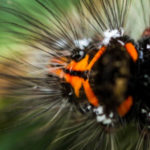 TershaKeymaster
TershaKeymaster- https://www.flickr.com/photos/diane_rose/
- Allows Edits: Yes
@tersha- Posts:17284
Allows Edits? YesErik, it’s taken me a while to read, and I’ve really enjoyed it!
-
March 14, 2016 at 5:33 pm #223779
Thank you Tersha!
-
March 14, 2016 at 10:14 pm #223834
Eric my friend I am impressed.
-
March 16, 2016 at 8:26 am #224003
Thank you John.
-
-
March 19, 2016 at 7:52 pm #224344
Erik I am coming late to your bio but it is a very interesting history. In the short time I have been at Lightstalking your images have stood out for me, your edgy, supersharp style, your mastery of black and white. Now that I see your history I begin to understand why. You’re one of the guys that gives me something to think about, what can I incorporate from this charismatic style into my own very different one?
Let me add that, during the sixties, I think I looked just like you. But probably shorter.
Cheers! -
March 20, 2016 at 10:56 am #224395
Hi 3pco, Thanks for reading and responding and your kind words about my pictures and comments.
One think which is highly unlikely, that is that you are shorter than I am.
I am 1.72 meter (5.6 ft) 🙂 -
March 21, 2016 at 1:56 am #224483
Ha Erik,
I don’t normally make comment here, for I am a beginner to this photography world, so much to learn. After reading your story in 3 breaks (Morning tea, Lunch, and afternoon tea), can I say you were one of those fun, trouble making, creative, talkative,talented kids in your high school. Really enjoy your story. -
March 21, 2016 at 6:04 pm #224584
Hi Heidi,
Either you have very short breaks or my story is way too long.
Thank you for reading.
“Trouble making” yes we were, but usually in a positive way.
Contributing to the social and cultural life at school. Never contaminating. But we had to push the boundaries every now and then…. -
April 11, 2016 at 8:38 pm #252326
 Angela FransenParticipant
Angela FransenParticipant- Allows Edits: Yes
@angelafransen- Posts:22
No Achievements Yet!
Allows Edits? YesGreat story:) Very interesting:) Thank you for sharing.
-
-
AuthorPosts
- You must be logged in to reply to this topic.





